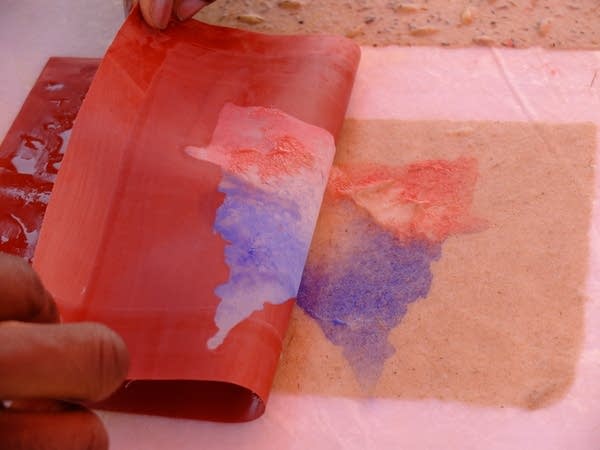Art from invasive species creates conversations about conservation

Colored paper pulp is used to make images on freshly made paper at the Paper Plains mobile studio in Detroit Lakes, Minn., last Saturday.
Dan Gunderson | MPR News
Go Deeper.
Create an account or log in to save stories.
Like this?
Thanks for liking this story! We have added it to a list of your favorite stories.


